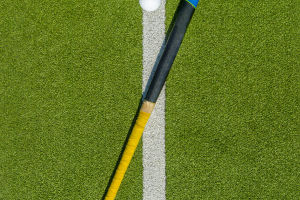Tennis
Tennis is a sport where players hit a tennis ball across a net using tennis rackets, typically played between two single players or two pairs. It originated in France, was formalized in England, saw its popularity surge in the United States, and is now prevalent worldwide.
Tennis is a bona fide physical activity. Its frequent twisting movements help shed excess fat around the waist, commonly known as "love handles." Moreover, tennis is an endurance sport; sweating during exercise promotes the expulsion of metabolic waste and can contribute to healthier skin. For these reasons, tennis has evolved from an elite sport for a few into one of the most popular recreational activities.
Tennis Warm-Up
Many people arrive at the tennis court eager to play without a proper warm-up, which is a mistake.
Almost all sports require warm-up exercises, and tennis is no exception. By taking precautions, the risk of injury can be significantly reduced, and even if injured, it can be promptly and properly treated to return to the game actively.
1. Lunging Movement
The first set of warm-up exercises for tennis targets the hips, calves, leg joints, and quadriceps, which are areas prone to intense activity in tennis.
Step forward with the left leg, bending into a lunge position, lowering the body with the right knee close to the ground while keeping the back straight.
Push off with the right leg, stepping forward; repeat with the right leg lunging forward and the left knee close to the ground. Alternate legs for about 20 steps.
2. Leg Kicks
The second set of warm-up exercises focuses on the trunk and legs, emphasizing the importance of leg warm-ups in tennis.
Stand on the left leg with the back straight, and kick the right leg forward to parallel height, ensuring the leg is straight.
Swing the right leg backward in a controlled motion, completing one kick. Perform 10 kicks with each leg.
3. Arm Circles
The third set of warm-up exercises targets the shoulder joints and arm muscles of the upper body, areas that require significant exertion and should not be underestimated.
Extend both arms upward, then circle them backward, bringing them around to the front and back to the starting position.
Perform 10 circles in one direction, then switch and perform 10 circles in the opposite direction.
4. Torso Rotation
The final set of warm-up exercises for tennis targets the upper body's mobility, allowing it to move freely as it will be utilized more intensely during play.
Stand with feet apart, arms extended sideways parallel to the ground.
Contract the glutes, rotate the body to the right, then to the left, performing 10 rotations on each side.
First Aid for Injuries
While warm-up prepares the body for exercise, it doesn't eliminate the risk. Tennis injuries, while perhaps not as severe as those in football or basketball, should not be taken lightly, as even minor discomfort can signal significant issues.
1. Abrasions
Abrasions are common injuries in tennis, involving superficial skin scrapes that are relatively easy to treat.
Clean the abrasion area. Use antiseptic swabs from the first aid kit to clean and disinfect the wound, ensuring the removal of any foreign objects.
Bandage the wound. If there's bleeding, apply sterile gauze from the first aid kit to the affected area.
2. Blisters
Blisters, caused by moisture, pressure, and friction during tennis, can lead to bacterial infections if ruptured accidentally.
Clean and disinfect. If a blister bursts, clean and disinfect the area promptly using antiseptic swabs.
Bandage with gauze. After disinfection, apply clean gauze and try to keep the wound exposed to air for optimal healing over the next few days.
3. Cramps
Muscle cramps occur when fatigued muscles undergo intense activity, such as sudden vigorous movements in tennis.
Stretching. When experiencing cramps, the basic response is to stretch the affected muscle in the opposite direction gently.
Massage. Complement stretching with massage techniques to aid quick recovery.
4. Sprains
The extensive movements required in tennis can lead to sprains, commonly affecting the ankles, knees, and wrists.
Apply ice: Immediately apply an ice pack from the first aid kit to the injured area for 10 to 15 minutes.
Bandage: Use a bandage to stabilize the injured area, ensuring it's not too tight to impede blood circulation.
Monitor: If swelling is evident or a popping sound was heard during the injury, indicating a severe sprain, rest for at least 15 minutes, then seek medical attention within 24 hours.
Tennis is dubbed the "second-largest sport in the world," with endless allure. It's hoped that everyone can enjoy tennis safely within their limits and relish the joys of sports.


